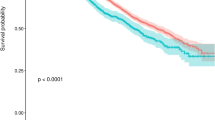Abstract
To determine, among a population with subdural hematoma (SH), whether patients affected by neurodegenerative disorders (parkinsonism and dementia) have a worse clinical outcome. We reviewed the data of patients diagnosed with fall-related SH discharged from the Departments of Neurology/Stroke unit, Neurosurgery, Intensive Care Unit at Brotzu General Hospital (Cagliari, Italy) between January 2010 and December 2013. Patients with severe traumatisms, evidence of spontaneous intracerebral bleeding or aged less than 50 were excluded. 332 patients were selected: 69 with a neurodegenerative parkinsonism or dementia (N-group), 217 with history of chronic non-neurological medical conditions with significant disability, previous falls and/or balance problems (NND-group) and 46 with a history of “minor” chronic non-neurological disorder. (NN-group). The clinical status at admission and discharge was assessed by modified Rankin Scale (mRS). The time-span between trauma and hospital admission was also calculated. At hospital admission we found a significantly longer delay in SH’s diagnosis (χ 2 test p < 0.001) and a worse mRS score (Kruskal Wallis p < 0.001) in the N-group compared to both NN and NND-groups. During hospital stay we observed the lack of significant variation in mRS score in N-group (Wilcoxon test p = 0.86), in contrast with NN and NND-groups who significantly improved (Wilcoxon test p < 0.001). Our results demonstrate that the consequences of SH are more severe in the N-group compared to NN and NND-groups. The longer interval between trauma and hospital admittance plays a critical role in worsening the outcome of patients with parkinsonism and dementia compared to subjects without neurodegenerative disorders.

Similar content being viewed by others
References
Chou SM, Gutmann L (2001) Deteriorating parkinsonism and subdural hematomas. Neurology 57(7):1295
Ducruet AF, Grobelny BT, Zacharia BE, Hickman ZL, DeRosa PL, Anderson K, Carpenter A, Suman S, Meenakshisundaram S, Woodhouse P (2006) Bilateral chronic subdural haematoma: a reversible cause of parkinsonism. J R Soc Med 99(2):91–92
Ellul MA, Cross J, Barker RA (2013) l-Dopa responsive parkinsonism secondary to a subdural haematoma. J Clin Neurosci 20(7):1022–1024. doi:10.1016/j.jocn.2012.06.019 (Epub 2013 Apr 22)
Maertens de Noordhout A, Daenen F, Bex V (2006) Dopa-responsive parkinsonism after acute subdural hematoma. Eur J Neurol 13:e10–e11
Ishikawa E, Yanaka K, Sugimoto K, Ayuzawa S, Nose T (2002) Reversible dementia in patients with chronic subdural hematomas. J Neurosurg 96(4):680–683
Jacobson PL, Farmer TW (1979) The “hypernormal” CT scan in dementia: bilateral isodense subdural hematomas. Neurology 29(11):1522–1524
Hofman A, Grobbee DE, de Jong PT, van den Ouweland FA (1991) Determinants of disease and disability in the elderly: the Rotterdam Elderly Study. Eur J Epidemiol 7(4):403–422
Borger V, Vatter H, Ozvald A, Marquardt G, Seifer V et al (2012) Chronic subdural haematoma in elderly patients:a retrospective analysis of 322 patients between the ages of 65–94 years. Acta Neurochir 154:1549–1554
Kolias AG, Chari A, Santarius T, Hutchinson PJ (2014) Chronic subdural haematoma: modern management and emerging therapis. Nat Rev Neurol 10:570–578
Weigel R, Schmiedek P, Krauss JK (2003) Outcome of contemporary surgery for chronic subdural haematoma: evidence based review. J Neurol Neurosurg Psychiatry 74:937–943
van Havenbergh T, van Calenbergh F, Goffin J, Plets C (1996) Outcome of chronic subdural haematoma: analysis of prognostic factors. Br J Neurosurg 10:35–39
Gardner RC, Burke JF, Nettiksimmons J, Goldman S, Tanner CM, Yaffe K (2015) Traumatic brain injury in later life increases risk for Parkinson disease. Ann Neurol 77(6):987–995
Melton LJ 3rd, Leibson CL, Achenbach SJ et al (2006) Fracture risk after the diagnosis of Parkinson’s disease: influence of concomitant dementia. Mov Disord 21(9):1361–1367
Wang HC, Lin CC, Lau CI, Chang A, Sung FC, Kao CH (2014) Risk of accidental injuries amongst Parkinson disease patients. Eur J Neurol 21(6):907–913
Sarkiss CA, Fogg GA, Skovrlj B, Cho SK, Caridi JM (2015) To operate or not?: a literature review of surgical outcomes in 95 patients with Parkinson’s disease undergoing spine surgery. Clin Neurol Neurosurg 134:122–125
Author information
Authors and Affiliations
Corresponding author
Ethics declarations
Conflict of interest
The authors declare that they have no conflict of interest.
Rights and permissions
About this article
Cite this article
Arca, R., Ricchi, V., Murgia, D. et al. Parkinsonism and dementia are negative prognostic factors for the outcome of subdural hematoma. Neurol Sci 37, 1299–1303 (2016). https://doi.org/10.1007/s10072-016-2588-8
Received:
Accepted:
Published:
Issue Date:
DOI: https://doi.org/10.1007/s10072-016-2588-8




